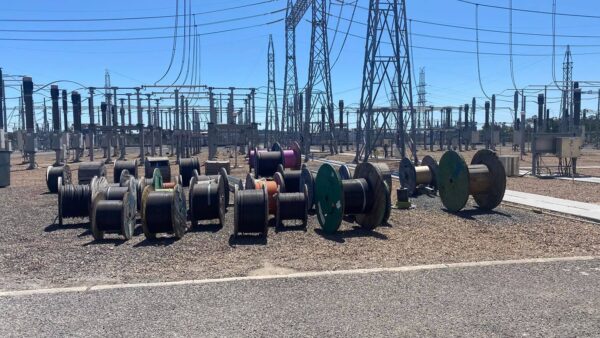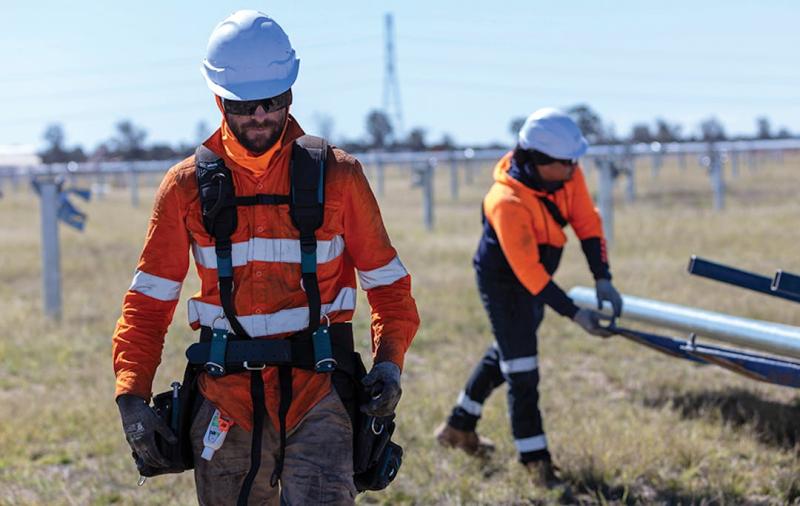The Queensland government has announced it will enshrine a target of 50% renewable energy by 2030 into law, rising to 70% by 2032 and 80% in 2035, if draft legislation released at the weekend passes state parliament.
The proposed legislation will also enshrine 100% public ownership of Queensland’s power line transmission and distribution network, and “deep storage”, including from the planned 5 GW Pioneer-Burdekin and 2 GW Borumba pumped hydro projects. The state will also maintain a 50% or more share of generation.
The release of the draft bill came as the state government announced it will invest $500 million (USD 330 million) to accelerate the progress of renewable energy projects to be developed by publicly owned energy generator and retailer CleanCo. The investment is intended to support the development phase of up to 2.3 GW of large-scale solar and wind projects in central Queensland.
Queensland Premier Annastacia Palaszczuk said the funding commitment puts CleanCo on a path to supercharging its current portfolio of generation assets and will ensure Queenslanders continue to own the energy assets that will drive the state’s renewable future.
“This is about future-proofing central and regional Queensland,” she said. “This half-a- billion-dollar investment in new renewable wind and solar projects will propel our government’s commitment to delivering more cheaper, cleaner renewable energy.”
The Queensland government last year announced a $62 billion plan to deliver on new renewable energy targets with the conversion of state-owned coal-fired power plants into clean energy hubs predicted to create space in the market for an additional 22 GW of wind and solar by 2035.
The state government said the draft Energy (Renewable Transformation and Jobs) Bill 2023 to be brought to parliament by the end of the year will help make the Queensland Energy and Jobs Plan a reality.

Image: PowerLink
The draft Bill includes the regulatory frameworks required to build the Queensland SuperGrid – a massive fit out of solar, wind, battery and hydrogen generators connected through publicly-owned transmission assets – and deliver necessary infrastructure and investment.
The legislative package will also establish a new Renewable Energy Zone (REZ) delivery body to streamline and coordinate the connection of multiple projects in REZs across northern, central and southern Queensland.
The legislation also outlines the creation of a Queensland Energy System Advisory Board, an Energy Industry Council, and the Queensland Renewable Energy Jobs Advocate. It also includes a $150 million job security guarantee to support workers in publicly owned coal-fired power stations.
The Queensland government said the frameworks will unlock new opportunities and attract private sector investment with the energy transformation requiring “the biggest energy investment program in the history of the state.”
“This means substantial investment in generation, transmission, distribution, and storage,” it said. “This will require investment from both the public and private sectors. Like today, Queensland intends to have blended ownership in its generation sector. This means a mix of government ownership, government underpinning private sector investment through long-term offtake arrangements, and completely private players.”
Deputy Premier Steven Miles described the plan as the “most ambitious of any government in Australia.”
“Our plan is only possible because we have retained public ownership of our energy assets and this Bill helps protect that ownership,” he said.
“We’re putting Queensland on the map as a global leader in renewable energy and reducing energy system emissions by 96% by 2040.”
“We’re also building our local manufacturing capacity because we will need thousands of batteries, wind turbines, solar panels and kilometres of transmission lines – and we want that equipment built here in Queensland, so Queenslanders get the benefits.”
The government is now seeking feedback from stakeholders as it looks to refine the Bill, with definitions and methodology to be developed with unions, advocates, industry, and investors, with engagement already underway. The closing date for feedback is 23 June 2023.
This content is protected by copyright and may not be reused. If you want to cooperate with us and would like to reuse some of our content, please contact: editors@pv-magazine.com.









3 comments
By submitting this form you agree to pv magazine using your data for the purposes of publishing your comment.
Your personal data will only be disclosed or otherwise transmitted to third parties for the purposes of spam filtering or if this is necessary for technical maintenance of the website. Any other transfer to third parties will not take place unless this is justified on the basis of applicable data protection regulations or if pv magazine is legally obliged to do so.
You may revoke this consent at any time with effect for the future, in which case your personal data will be deleted immediately. Otherwise, your data will be deleted if pv magazine has processed your request or the purpose of data storage is fulfilled.
Further information on data privacy can be found in our Data Protection Policy.